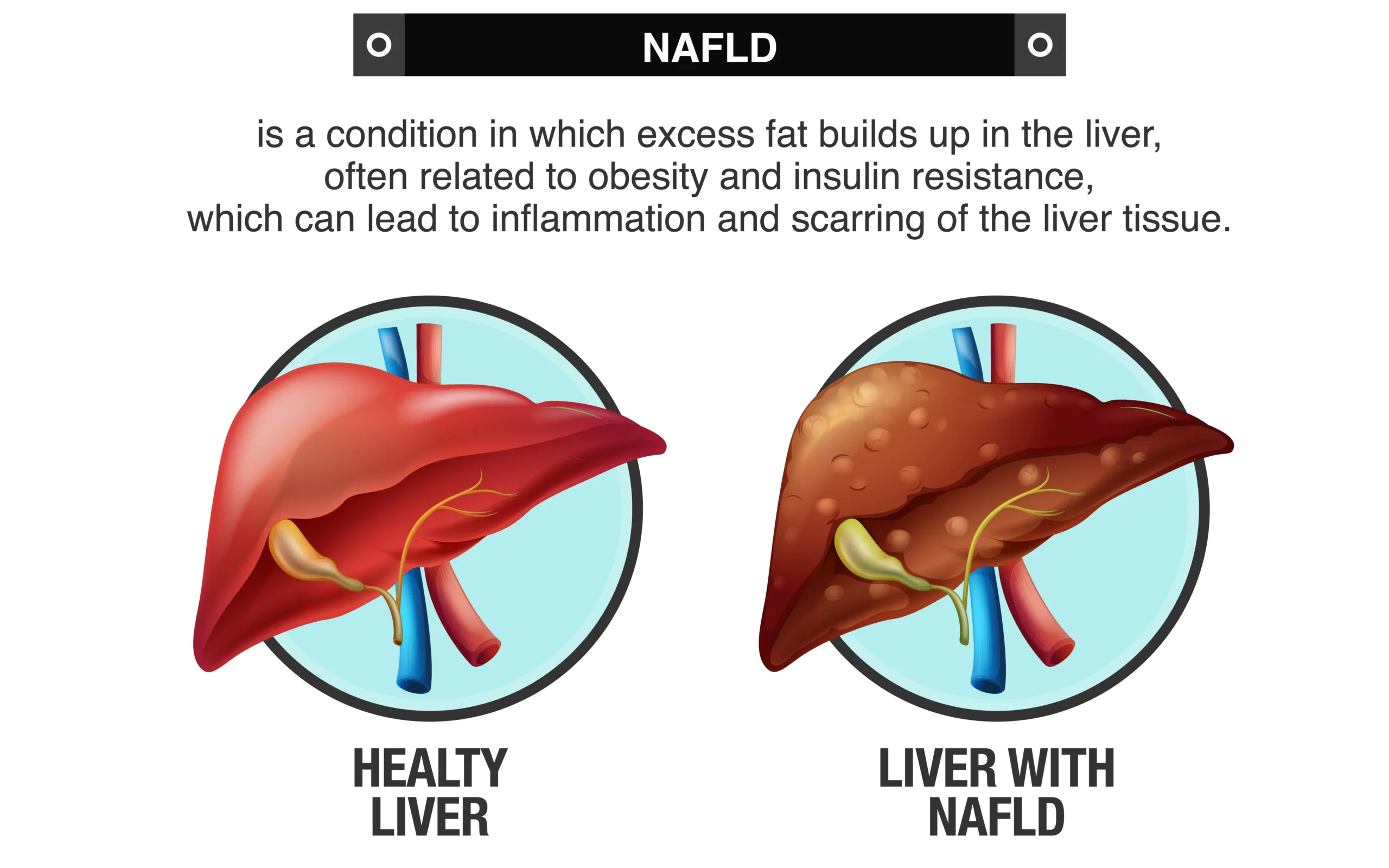The rapid evolution of the food industry over the past several decades has transformed human diets in unprecedented ways. While these changes have made food more convenient, accessible, and shelf-stable, they have also contributed to an alarming rise in metabolic disorders—including non-alcoholic fatty liver disease (NAFLD). This condition, once rare, has become a global epidemic, closely linked to obesity, insulin resistance, and an increased risk of cardiovascular disease and cancer.
NAFLD occurs when excess fat accumulates in the liver, independent of alcohol consumption, leading to inflammation, fibrosis, and in severe cases, cirrhosis. The primary culprit behind this surge in NAFLD is the widespread consumption of ultra-processed foods, refined sugars, and industrially modified fats. These dietary shifts, coupled with sedentary lifestyles, have created a metabolic storm—one that threatens not just liver health, but overall systemic well-being.
This article explores how modern food industry practices, particularly the reliance on processed ingredients and high-fructose sweeteners, have fueled the rise of NAFLD and other metabolic disorders, and what can be done to reverse this trend.
Table of Contents
The Industrialization of Food and the Rise of NAFLD
Over the past half-century, the global food supply has shifted dramatically from whole, minimally processed ingredients to mass-produced, chemically modified, and calorie-dense foods. Several key industry practices have contributed to the sharp increase in metabolic disorders:
1. The Proliferation of High-Fructose Corn Syrup (HFCS)
The introduction of HFCS in the 1970s revolutionized the food industry, providing an inexpensive and highly sweet alternative to traditional sugar. Found in everything from sodas to salad dressings, HFCS is metabolized primarily in the liver, where it promotes fat accumulation, disrupts insulin sensitivity, and drives inflammation. Studies have shown that high fructose consumption directly correlates with an increased risk of NAFLD and type 2 diabetes.
2. The Rise of Ultra-Processed Foods
Modern diets are now dominated by ultra-processed foods (UPFs), which contain refined carbohydrates, artificial flavorings, preservatives, and hydrogenated fats. These foods lack essential nutrients and fiber while being engineered for hyper-palatability, leading to overeating, insulin resistance, and excessive fat storage in the liver.
3. Liquid Calories and the Hidden Sugar Epidemic
Sugary beverages—including sodas, sports drinks, and fruit juices—are among the largest contributors to excess sugar intake. Unlike solid foods, liquid sugars bypass normal satiety mechanisms, leading to rapid spikes in blood sugar and insulin levels. The liver, overwhelmed by these liquid calories, converts the excess sugar into fat, exacerbating NAFLD progression.
4. Nutrient Depletion in Modern Diets
The transition to processed foods has resulted in a significant decline in nutrient density. Critical micronutrients such as magnesium, omega-3 fatty acids, and antioxidants—essential for metabolic and liver health—are often lacking in industrialized diets. This deficiency contributes to oxidative stress, systemic inflammation, and impaired metabolic function.
The Metabolic Consequences of Modern Diets
The rise of NAFLD does not occur in isolation—it is part of a broader pattern of metabolic dysfunction that includes obesity, insulin resistance, and chronic inflammation. These conditions, in turn, create a cascade of health complications that extend far beyond liver disease.
1. The Role of Insulin Resistance
Excessive consumption of refined carbohydrates and sugars leads to repeated insulin spikes, eventually causing insulin resistance—a hallmark of metabolic syndrome. Insulin resistance not only promotes NAFLD but also increases the risk of type 2 diabetes, hypertension, and cardiovascular disease.
2. Visceral Fat and Inflammation
NAFLD is strongly linked to an increase in visceral fat—the dangerous fat that surrounds internal organs. Visceral fat secretes pro-inflammatory cytokines, contributing to chronic low-grade inflammation, which damages blood vessels, accelerates atherosclerosis, and elevates the risk of stroke and heart attack.
3. The Connection Between NAFLD and Cancer
Recent studies suggest that NAFLD significantly raises the risk of developing several cancers, including hepatocellular carcinoma (liver cancer), colorectal cancer, and breast cancer. The underlying mechanisms include:
- Chronic inflammation: Persistent liver inflammation promotes genetic mutations and tumor growth.
- Oxidative stress: Excess fat in the liver leads to DNA damage, increasing cancer susceptibility.
- Hyperinsulinemia: Elevated insulin levels create a favorable environment for cancer cell proliferation.
Cardiovascular Disease: A Silent Consequence of NAFLD
NAFLD is not just a liver issue—it is a major predictor of cardiovascular disease (CVD), the leading cause of death worldwide. Individuals with NAFLD frequently exhibit:
- Atherogenic dyslipidemia: An imbalance in blood lipids characterized by high triglycerides, low HDL cholesterol, and dense LDL particles.
- Endothelial dysfunction: Impaired blood vessel function due to systemic inflammation.
- Hypertension and heart failure: Metabolic imbalances associated with NAFLD increase the risk of high blood pressure and cardiac dysfunction.
Addressing the Root Cause: Strategies for Prevention and Reversal
Preventing and reversing NAFLD requires a shift away from modern dietary pitfalls and a return to metabolically supportive eating patterns. Key interventions include:
1. Eliminating Processed Foods and Sugars
Reducing the intake of HFCS, refined grains, and artificial additives can significantly improve liver function and metabolic health. Prioritizing whole foods—such as vegetables, lean proteins, and healthy fats—helps stabilize blood sugar levels and reduce liver fat accumulation.
2. Increasing Dietary Fiber and Omega-3 Intake
A diet rich in fiber from vegetables, legumes, and whole grains enhances gut health, slows glucose absorption, and prevents excessive insulin secretion. Meanwhile, omega-3 fatty acids (found in fatty fish, flaxseeds, and walnuts) have been shown to reduce liver inflammation and improve lipid profiles.
3. Engaging in Regular Physical Activity
Exercise remains one of the most effective ways to combat NAFLD. Both aerobic and resistance training improve insulin sensitivity, reduce liver fat, and enhance overall metabolic function.
4. Early Detection and Monitoring
Routine screenings for liver enzymes, insulin resistance, and inflammatory markers can help identify metabolic dysfunction before it progresses into severe disease. Physicians are increasingly using imaging techniques such as FibroScan and MRI to assess liver fat levels non-invasively.
Conclusion
The rise of NAFLD is a direct consequence of modern food industry practices that prioritize convenience and profit over public health. Ultra-processed foods, excessive sugar consumption, and nutrient depletion have created a perfect storm for metabolic disease, setting the stage for widespread liver dysfunction, cardiovascular disease, and cancer.
However, NAFLD is largely preventable—and even reversible—through dietary and lifestyle modifications. By shifting away from processed foods, prioritizing whole, nutrient-dense meals, and engaging in regular physical activity, individuals can safeguard their metabolic health and reduce their risk of chronic disease.
The modern food environment may be stacked against us, but with informed choices, proactive healthcare, and a return to real food, we can reclaim our health and prevent the devastating consequences of metabolic dysfunction.





0 Comments